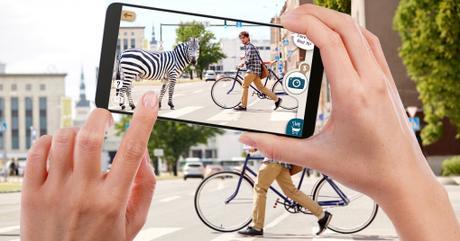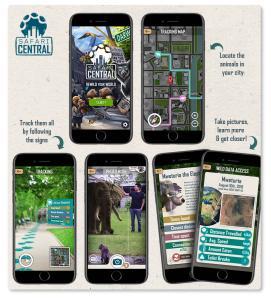Bridging the gap between an urban population and the wildlife we love.
The world continues to urbanise. According to the Population Reference Bureau, the developed nations of the world are 74% urban, and it is expected that by 2050, 70% of the entire world will be ‘urban’. Besides all the other consequences, people’s connection to nature will become more and more distant. With more people living in concrete jungles, a faster pace of life and a barrage of things competing for their attention, we cannot expect that nature, wildlife protection, ocean sustainability, et cetera will be high on the list of their priorities. Other than when the most sensational of news stories are released, how many of them will even think about wildlife, let alone take any personal steps that would make a difference to its survival?
If these are the people who define consumer behavior and impact policy decisions, they are the ones who will also unwittingly drive the wildlife-conservation agenda. The conservation sector must therefore make a more concerted effort to connect with city dwellers and to do so, understand the motivations and desires of the greater public.
The good news is that despite the grander evidence against it, people do love animals. As children, we are surrounded by animals. Many of our favorite books, movies, clothes, and toys are associated with animals. Even as adults, 163 million of us have watched a video of a panda clinging to its caretaker, 100 million of us went to see Jungle Book, and 700 million more of us visited zoos last year. Marketers play into our love of animals and use the sympathetic or iconic nature of animals on a massive scale in advertising and branding.
If you threw practicality out the window, the most impactful thing you could do to convert that love of animals into a love of conservation would be to airlift those hundreds of millions of people into the Amazon, Serengeti, or Alaskan wilderness for a week. While the experience wouldn’t make all of them conservationists, it would certainly change the way they thought about the importance of nature.
Given this impossibility, the next best thing is to bring nature to them and entice them to explore more within their own means. Shows like BBC Planet Earth or Wild Kratts do a fantastic job of revealing the awesomeness of nature in a way that most everyone appreciates.
But TV shows are still a passive experience where the viewer takes in what he/she is being shown.
Our work at Internet of Elephants is to supplement this type of programming with games about wildlife that can actively be played every day. Our goal is to get people to think about wildlife for five minutes every day and convert the urban world into wildlife addicts.
According to the latest Newzoo Global Games report, mobile games are played by over 25% of the world’s population and the number is growing. While the use of games to benefit wildlife has been tried before, they have always targeted people who are already wildlife and nature lovers. They do not become commercially successful and therefore are limited in the sustained impact they can have.
We’ve spent the last year testing prototypes and concepts with audiences to find the right ingredients to create products for wildlife conservation that can be commercially successful. We found three that are essential for full engagement, and while each of these have been tried on its own, the combination seems to be missing in much of what we see today.
- Emotion: To create a real connection with wildlife, there must be a route to the heart. Gloomy stories about the demise of an iconic species feel too distant and anonymous. People react to the stories of individuals and that goes for animals too, as evidence by the world’s reaction to Cecil the lion or Satao the elephant.
To create the connection, we need to bring the stories of wildlife to the user and so we turned to the concept of the Internet of Things to look at how the internet can connect people with animals, and not just with their cars and refrigerators.
We use the real data gathered from GPS tracking devices on dozens of species to tell compelling stories about individual animals — this helps to create that bond that is so critical to changing hearts and minds.
But this information is still being sent in one direction — something you can watch, but not do. Which bring us to the next critical ingredient:
- Participation: To create real engagement, the audience must feel they are part of it, not just a passive viewer. The most successful social cause campaigns such as Movember and the Ice Bucket Challenge, are the ones that gets the audience involved in some way.

The story of these real elephants, or jaguars, or pangolins, is now closer to where you are. None of this matters though, unless you have the most critical element:
- Fun: And there needs to be lots of it. If its only emotional or only educational, it will only appeal to the already converted or have only a short-term effect. Games for good unfortunately often forget about the primary need games satisfy for the user, which is to have fun, and instead focus entirely on their own need: to communicate the cause. This one-sided way of building advocates can undermine the best of intentions. We took inspiration from Amy Jo Kim’s great talk where she describes the social engagement verbs that describe the four player types. You may not consider yourself a gamer, but you are sure to identify with one of these nonetheless:
- You like to express: you enjoy choosing, customizing, designing, and showing off
- You like to compete: you want to win, beat, challenge, and get to the next level
- You like to explore: you want to view, read, collect, curate, and complete
- You like to cooperate: you want to join, share, greet, and exchange
What we found is the more you try and appeal to all the player types in one product, the more you dilute the appeal to any of them. So we shelved some of our favorite concepts, and for now settled on the one that evoked the greatest sense of wonder and fun from our test audiences.
By using the wildlife data that are gathered from GPS of real animals and combining them with augmented-reality re-creations of the animals, we can create a Pokémon Go-like experience that can bring wildlife right into the life of the average urban citizen.

The game-play revolves around physically tracking those animals in your own environment and seeing them come to life in augmented reality upon finding them, with the opportunity to take and share their photograph. A better understanding of an animal’s behavior patterns lead to better outcomes and quicker progressions through the missions of the game.
We concentrated our attention on the player that likes to explore. We create missions of increasing difficulty to track and ‘collect’ elephants, tigers, et cetera combined with the opportunity to explore your city and new neighbourhoods. There are strong elements of competition and expression along with opportunities to collaborate, creating what we hope is a rich, exciting, emotional, and educational experience.
Can these types of experiences really make a difference to how people perceive and support wildlife? We think so, but changing behavior takes a long time to achieve, and so in the short term, the revenues from the game will also be used directly to support the animals in the game through the projects of our conservation partners, the first six of which are Ol Pejeta Conservancy, WWF-Brazil, Chicago Zoological Society, Tswalu Foundation, Space for Giants, and Conservation International.
The full release of the game, called Safari Central is targeted for mid-2018, an augmented-reality pilot will be released in mid-August 2018, and it will have a crowdfunding campaign that will end on 8 August 2017 to help finance the next step in the journey.
Gautam Shah, Internet of Elephants

